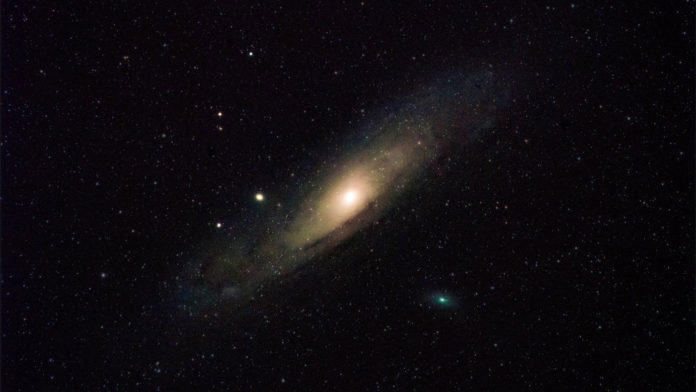The universe has been expanding since the Big Bang occurred 13.8 billion years ago—a proposition first made by the Belgian canon and physicist Georges Lemaître (1894-1966), and first demonstrated by Edwin Hubble (1889-1953). Determining the expansion history of our Universe is paramount to resolving its energetic composition or testing key ingredients of standard cosmology, such as the validity of General Relativity on large scales and the cosmic principle.
In 1929, American astronomer discovered that every galaxy is pulling away from us and that the most distant galaxies are moving the most quickly. Meanwhile, there was a time in the past when all the galaxies were located at the same spot, a time that can only correspond to the Big Bang.
This research gave rise to the Hubble-Lemaître law, including the Hubble constant (H0), a unit that describes how fast the universe is expanding at different distances from a particular point in space.
Existing H0 estimates lie around 70 (km/s)/Mpc (meaning that the universe is expanding 70 kilometers a second more quickly every 3.26 million light-years). The problem is that there are two conflicting methods of calculation: 1. The first method relies on the cosmic microwave background. And 2. The second method relies on the supernovae that appear sporadically in distant galaxies.
Both methods arrived at two values that are different by about 10% with a deviation that is statistically irreconcilable.
Now, a physicist at the University of Geneva (UNIGE) to solve the mystery that has been splitting the scientific community for a decade: At what speed is the universe expanding?
Lucas Lombriser, a professor in the Theoretical Physics Department in UNIGE’s Faculty of Sciences, explains: “These two values carried on becoming more precise for many years while remaining different from each other. It didn’t take much to spark a scientific controversy and even to arouse the exciting hope that we were perhaps dealing with a ‘new physics.'”
To narrow the gap, Lombriser entertained the idea that the universe is not as homogeneous as claimed, a hypothesis that may seem obvious on relatively modest scales. There is no doubt that matter is distributed differently inside a galaxy than outside one. It is more difficult, however, to imagine fluctuations in the average density of matter calculated on volumes thousands of times more massive than a galaxy.
Lombriser said, “If we were in a kind of gigantic ‘bubble,’ where the density of matter was significantly lower than the known density for the entire universe, it would have consequences on the distances of supernovae and, ultimately, on determining H0.”
All that would be required would be for this “Hubble bubble” to be sufficiently huge to include the galaxy that serves as a resource for estimating distances. By setting up a diameter of 250 million light-years for this bubble, the physicist calculated that if the density of matter inside were 50% lower than for the rest of the universe, a new value would be obtained for the Hubble constant, which would then agree with the one obtained using the cosmic microwave background.
Professor Lombriser said, “The probability that there is such fluctuation on this scale is one in 20 to one in 5, which means that it is not a theoretician’s fantasy. There are a lot of regions like ours in the vast universe.”
Lombriser also believes that their approach will erase this divergence without making use of any “new physics.”
The study is published in the journal Physics Letters B.
